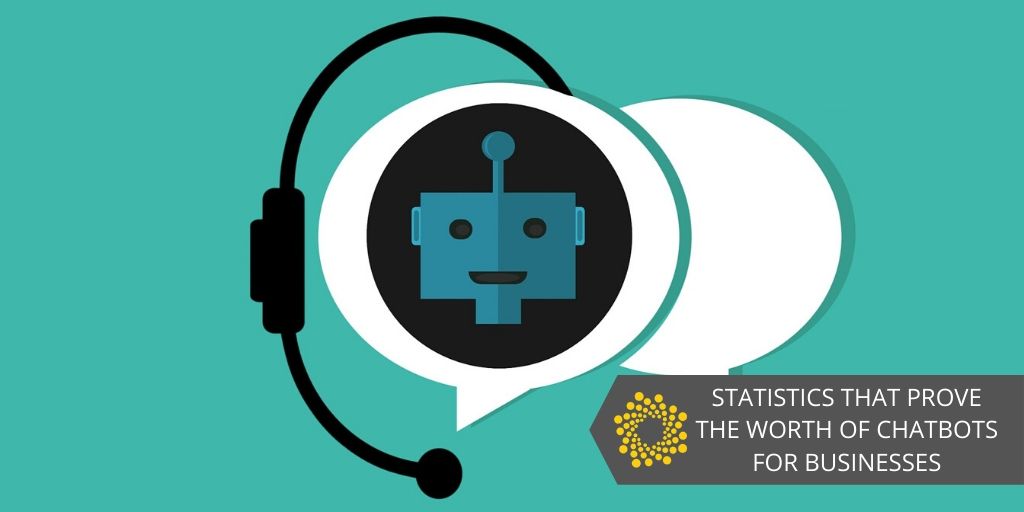When artificial intelligence (AI) grew more advanced and started powering modern-day chatbots, their application to different business processes and smart devices inevitably caused this technology to thrive. Since then, chatbots have become a popular feature in smart speakers, smartphones, and messenger apps. This technology has proven to be highly-valuable, particularly with the way business processes are handled today.
Each time a new technology is permanently integrated into business operations, it’s often set to revolutionize an industry. Alexa, Cortana, Google Assistant, and Siri have become consistent AI figures in each of their respective devices to help users find their way around through voice queries and commands.
Facebook has also integrated AI-powered chatbots for business accounts. When potential customers send queries, there’s an automated chatbot feature that can address their concerns. Other sectors such as health care, human resources, and e-commerce industries among others have also found good use of chatbots.
But this begs the question, are they really worth using to run your business more efficiently? These statistics speak for themselves:
Statistics Proving the Worth of Chatbots
- Businesses that use chatbots care most about round-the-clock service (64%), direct responses (55%), and answers to simple questions (55%).
According to a report by leading marketing chat software Drift, customers interviewed named the following benefits of having chatbots to run business operations: round-the-clock service (64%), direct responses (55%), and answers to simple questions (55%).
Since chatbots don’t need to rest, they can run your business operations 24/7, addressing inquiries or basic customer issues. They are programmed to send direct responses and can quickly answer simple questions to hasten the process of solving cases, enhancing your customer service capabilities.
- Users are most interested in using voice assistance for restaurant ordering (56%), making bank transfers (44%), and buying consumer products (35%).
The food, banking, and retail industries are three of the most popular sectors where consumers are interested in using voice assistants as stated in a report by Capgemini. It found out that 56% of users are interested in ordering at a restaurant with the help of a voice assistant, 44% would like to use them to make bank transfers, and 35% have already used them to buy consumer products.
These numbers show a level of trust on a voice assistant – people are willing to let it help them execute transactions quickly and accurately.
- The vast majority of voice assistant users are satisfied with the service: food orders (87%), money transactions (87%), consumer product purchases (86%), and taxi orders (83%).
In fact, the same Capgemini report learned that those who use voice assistants frequently or at least a few times are said to be satisfied with the service: 87% were satisfied with money transactions, 87% with food orders, 86% with consumer product purchases, and (83%) with taxi orders. This means people are in favor of the convenience these voice chatbots deliver to the table.
- The most common activities on smart speakers are: listening to music (82%), online shopping (54%), and home automation (35%).
Consumer research has found that the most common activities smart speakers are used for include playing music (82%), online shopping (54%), and home automation such as turning lights and other appliances on and off (around 35%). These are what people are using smart speakers for.
- 63% of recruiters claim that AI and chatbots have changed the way they hire talent.
In the recruitment sector, a global survey reported that 63% of talent acquisition professionals claimed that AI has changed how recruiting is handled in their firm and a huge part of this change is due to the integration of chatbots.
AI helps in the automation of menial and repetitive tasks such as the collection of information from candidates, the initial screening process through basic Q and A, and answering FAQs. This leaves human recruiters to handle more complex tasks to improve the whole hiring process.
- 52% of consumers think voice assistants are more convenient than websites or apps.
In another report, consumers would prefer a voice assistant over a website or app since 52% of them think it’s more convenient to use one while 48% of them agree that it allows them to multitask and work without using their hands. And the most advantageous for e-commerce websites: 41% claim that it helps them make recurring purchases.
- 27% of consumers aren’t sure if they’re engaging with a human or a bot during customer service.
AI technology has made vast improvements in its capabilities that 27% of consumers in this study say they were not sure if they had engaged a human or a bot during their conversation with customer service. This number is expected to grow as advancements in AI are set to improve the technology in the coming years, blurring the lines between human and machine engagement.
- In the US, 15% of adults have already interacted with a chatbot while 16% own smart speakers.
Yes, the technology is starting to become standard fare. In fact, 15% of Americans adults have already interacted with chatbots while 16% own smart speakers such as the popular Amazon Alexa. That’s over 49 million Americans who are fully immersed in the technology. Across the pond, 57% of UK consumers know about chatbots.
- Industries with the highest adoption rates for chatbots are online retail (34%), healthcare (34%), and telecommunication (25%).
AI-powered chatbots are accepted in these industries: online retail (34%), healthcare (34%), and telecoms (25%) according to this Statista report. The integration of the technology has proven to improve processes across these industries, setting the stage for chatbots to deliver faster and more efficient solutions.
- 75% of consumers expect an instant response from a chatbot.
People expect more efficient service from chatbots, so 75% of them expect an instant response from these machines. This is a reasonable expectation since chatbots are machines that are programmed to respond immediately to concerns.
- 96% of businesses believe chatbots are here to stay for good.
With the accuracy, speed, and convenience this technology brings, optimism is expected and 96% of businesses believe chatbots are here to stay for good. And with the upgrades that are set to improve the functions and capabilities of chatbots, the possibilities are endless.
- 47% of consumers are willing to purchase consumer goods via a chatbot.
To drive the point further, 47% of customers would be willing to purchase consumer goods from chatbots, which adds to the growing trust people are placing on these machines to handle transactions involving their finances.
- Only 43% of consumers said that they would choose to communicate with humans.
Only 43% of consumers said they would choose to communicate with humans, and 34% said they would go through a chatbot to connect with a human worker, proving that there is a general willingness and a combination of the two options is more effective.
- 35% of consumers want to see more companies using chatbots.
Another study claims that 35% of consumers want to see more companies using chatbots and 21% see them as the easiest way to contact a business.
- 95% of consumers think that customer service has the most to benefit from chatbots.
With chatbots mostly dealing with customer concerns, it’s no surprise that 95% of consumers think the customer service sector is going to be the major beneficiary of chatbots.
Chatbots Will Pave the Way for Better Business Processes
There is no doubt that chatbots and AI are redefining mobile marketing and a host of other industries. Your organization will benefit from the speed and accuracy these artificially intelligent machines can bring once they’re seamlessly added in your daily operations. Pretty soon, advancements will allow them to execute more complex tasks, giving human workers more time to take on critical-thinking tasks.
Ultimately, chatbots can help you save on operational costs while adding customer convenience. As they get better, so does your company performance. If you haven’t jumped into the opportunity to use them, it’s time to do so. Your organization is expected to be better as they get better, allowing you to improve, adjust, and find out how to best utilize this technology.
{{cta(‘c729f574-c4f0-441b-9910-09edbf73bb2c’)}}






